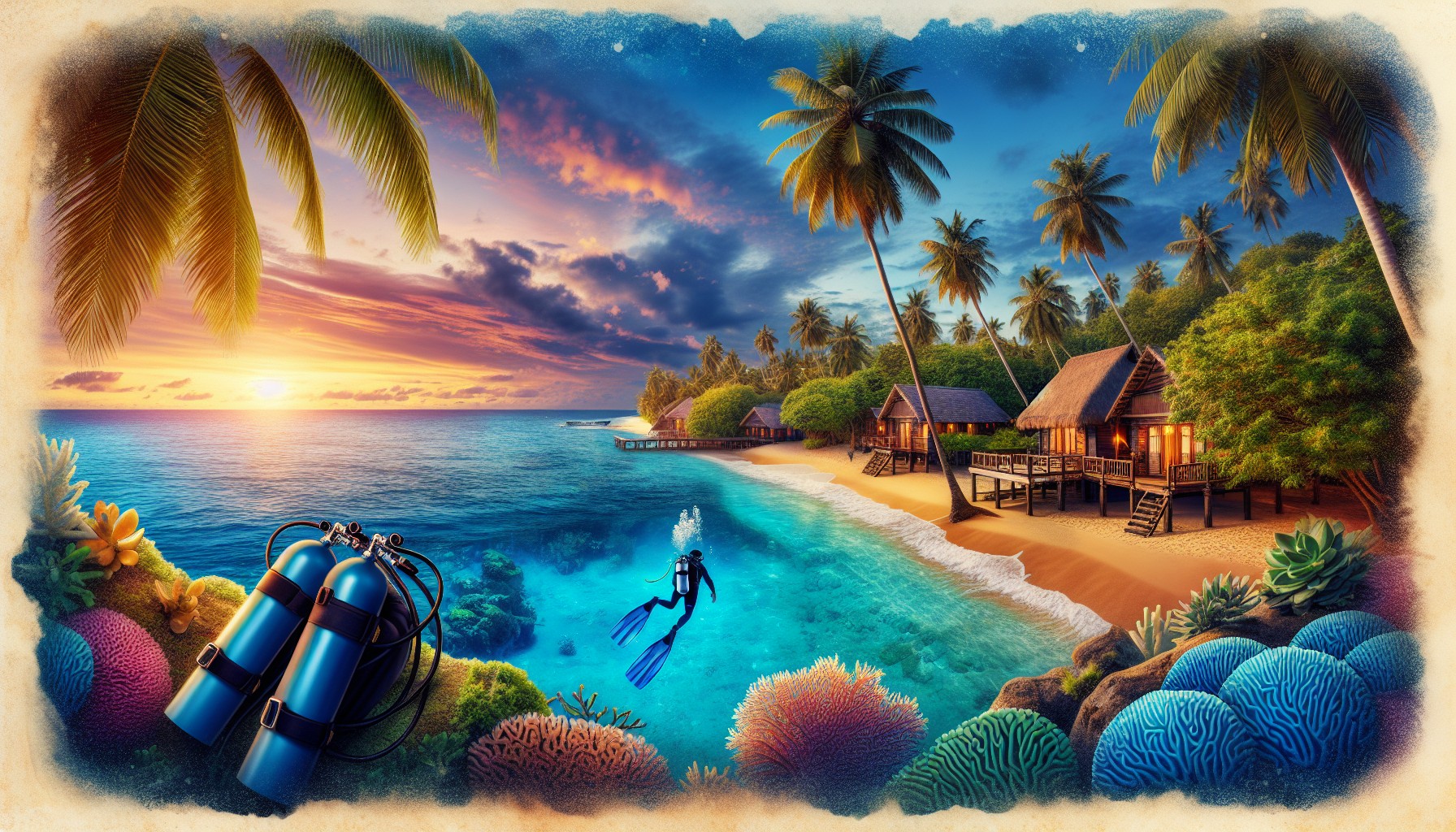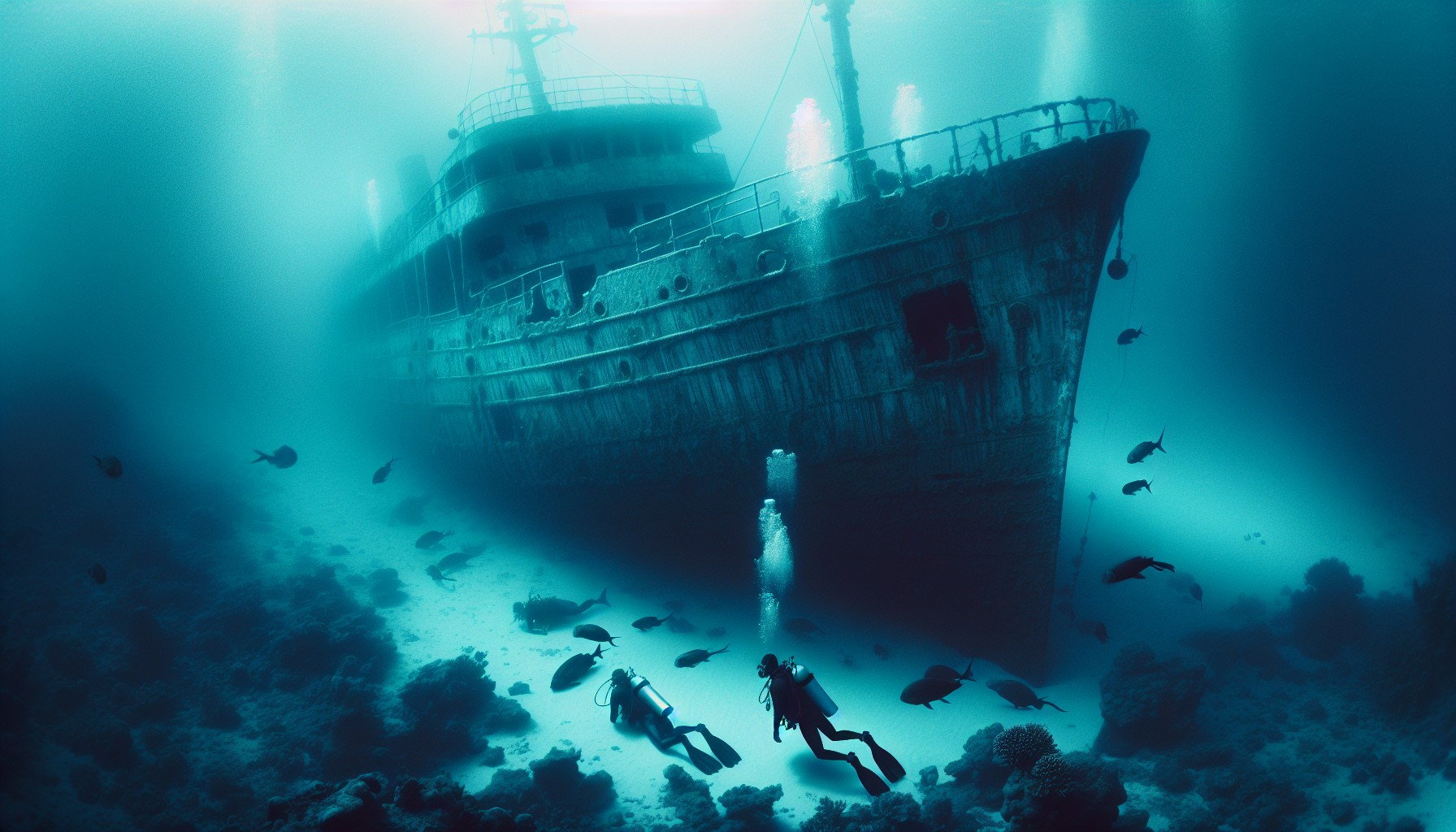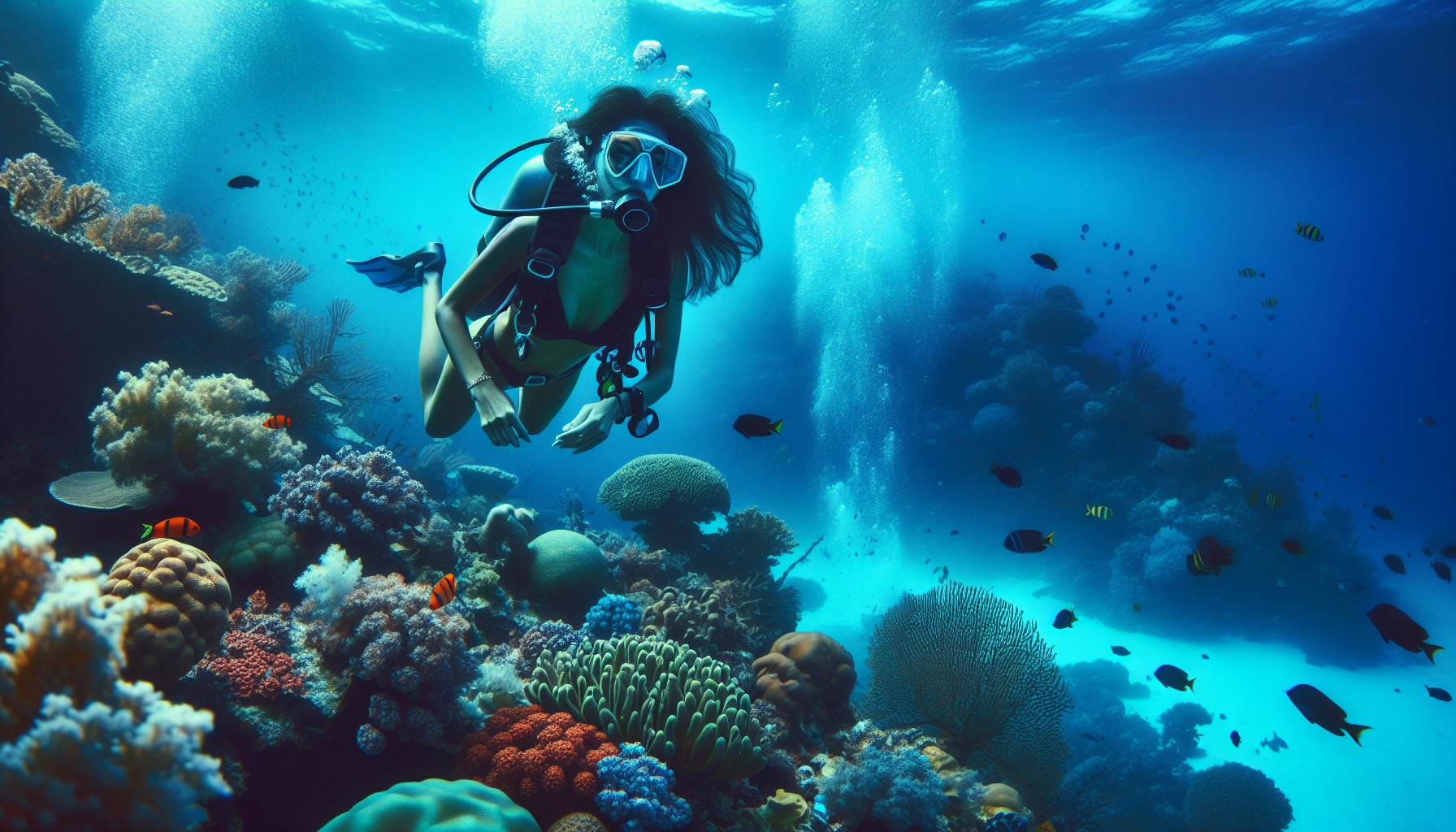Are you ready to embark on an underwater adventure like no other? Dive into the mesmerizing world of the Philippines, where some of the most incredible diving spots on the planet await. From the vibrant marine life of Tubbataha Reefs Natural Park to the historic wrecks of Coron Bay, there’s something for every scuba diver to explore. Get ready to unleash your inner adventurer and discover the best diving Philippines spots in 2023!
Key Takeaways
- Explore the vibrant marine life of Tubbataha Reefs Natural Park!
- Go on an underwater adventure with WW2 wrecks at Coron Bay and swim with thresher sharks in Malapascua Island!
- Experience a unique diving experience from Anilao’s Muck Diving Haven to Dimakya Island’s Marine Sanctuary, plus whale shark encounters in Donsol!
Tubbataha Reefs Natural Park
Imagine diving into a UNESCO World Heritage Site teeming with life, where reef sharks, whale sharks, and manta rays swim alongside sea turtles and countless species of fish. Welcome to Tubbataha Reefs Natural Park, a vibrant underwater paradise that will leave you breathless. This enchanting dive site is home to over 600 fish species, 359 coral species, and 13 dolphin and whale species, making it a must-visit destination for scuba diving enthusiasts.
Embarking on a liveaboard adventure between March and June offers the most enriching experience of Tubbataha Reefs when the park’s marine life is at its peak abundance. A week-long liveaboard trip is recommended to fully immerse yourself in the beauty of this underwater wonderland. During your trip, you’ll have the opportunity to encounter:
- Whitetip reef sharks
- Manta rays
- Turtles
- Barracudas
- Napoleon wrasses
- Giant trevallies
- Schools of jacks and snappers
Liveaboard vessels such as the Nirvana and the Philippine Siren offer spacious accommodations and top-notch amenities, ensuring a comfortable and unforgettable experience just a short boat ride away.
A journey of approximately 12 hours, sailing from Puerto Princesa in Palawan, will lead you to Tubbataha Reefs. The remote location of this natural park only adds to its allure, making it the ultimate destination for those seeking a truly unique diving experience. From the breathtaking coral gardens to the exhilarating encounters with large reef sharks, this dive site is nothing short of spectacular.
As you dive through the crystal-clear waters of Tubbataha Reefs Natural Park, you’ll be treated to an unparalleled display of marine biodiversity. So, what are you waiting for? Start planning your liveaboard adventure to this stunning underwater paradise today!
Coron Bay Wrecks
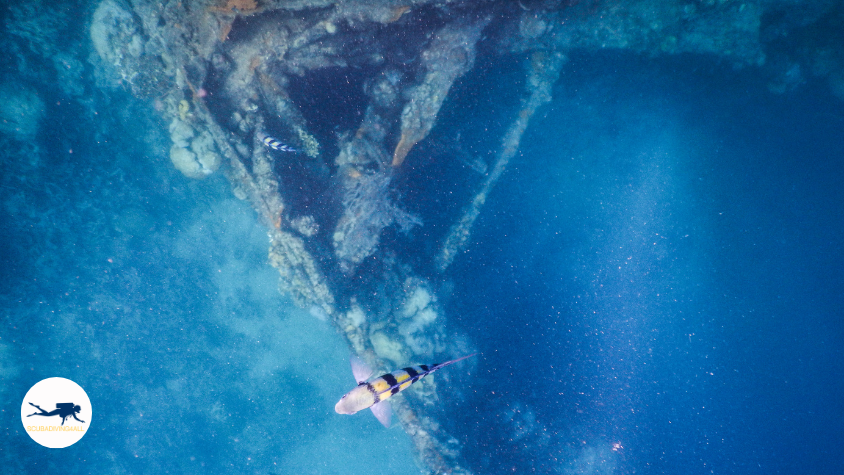
Dive into a world where history and marine life collide in the spectacular Coron Bay, renowned for its incredible WW2 wrecks and breathtaking reefs nearby. The most popular wrecks in Coron Bay are:
- Olympia Maru: A 122-meter-long passenger ship that was sunk by American bombers in 1944. The Olympia Maru rests upright on the bottom of the bay at a depth of 30 meters. Divers can explore the ship’s interior, including its cargo holds, engine room, and cabins.
- Irako: A 144-meter-long refrigeration ship that was sunk by American bombers in 1944. The Irako rests upright on the bottom of the bay at a depth of 43 meters. Divers can explore the ship’s interior, including its cargo holds, engine room, and refrigeration chambers.
- Okikawa Maru: A 134-meter-long oil tanker that was sunk by American bombers in 1944. The Okikawa Maru rests upright on the bottom of the bay at a depth of 30 meters. Divers can explore the ship’s interior, including its cargo holds, engine room, and bridge.
- Morazan: A 100-meter-long cargo ship that was sunk by American bombers in 1944. The Morazan rests upright on the bottom of the bay at a depth of 27 meters. Divers can explore the ship’s interior, including its cargo holds, engine room, and bridge.
- East Tangat Gunboat: A 28-meter-long gunboat that was sunk by American bombers in 1944. The East Tangat Gunboat rests upright on the bottom of the bay at a depth of 15 meters. Divers can explore the ship’s interior, including its gun deck and engine room.
- Kogyo Maru: A 140-meter-long freighter that was sunk by American bombers in 1944. The Kogyo Maru rests upright on the bottom of the bay at a depth of 34 meters. Divers can explore the ship’s interior, including its cargo holds, engine room, and bridge.
- Kyokuzan Maru: A 120-meter-long freighter that was sunk by American bombers in 1944. The Kyokuzan Maru rests upright on the bottom of the bay at a depth of 22 meters. Divers can explore the ship’s interior, including its cargo holds, engine room, and bridge.
- Lusong Gunboat: A 23-meter-long gunboat that was sunk by American bombers in 1944. The Lusong Gunboat rests upright on the bottom of the bay at a depth of 10 meters. Divers can explore the ship’s interior, including its gun deck and engine room.
Each offering a unique experience for wreck diving enthusiasts.
The shipwrecks in Coron Bay offer a fascinating underwater playground for scuba divers to explore. These wrecks are a testament to the dramatic events of September 1944, when a squadron of 24 US bombers destroyed the Japanese supply fleet hiding among the islands. The wrecks are now home to a variety of marine life, including:
- Scorpionfish
- Nudibranchs
- Cuttlefish
- Octopuses
- Reef sharks
- Stingrays
Diving among these wrecks provides a unique and thrilling experience for underwater enthusiasts who scuba dive.
A liveaboard diving trip is the optimal way to fully appreciate the beauty of Coron Bay’s wrecks. Vessels like the Atlantis Azores and Infiniti offer the Coron Wrecks/Apo Reef combo itinerary, giving you the ultimate diving experience in the Philippines. Divers should have an Advanced Open Water (or level 2) certification and a wreck specialty to dive in this thrilling underwater environment.
While diving is the main attraction in Coron Bay, non-divers can also enjoy:
- Island-hopping
- Beach hunting
- Snorkeling
- Kayaking
With its fascinating history and abundant marine life, Coron Bay is a must-visit destination for divers and non-divers alike.
Malapascua Island

I visited Malapascua for a month back in 2013, diving with Thresher Shark Divers short TSD, one of the pioneer dive center on the island. I got unforgettable memories there and friends for Life.
Picture yourself diving alongside the elusive thresher sharks, surrounded by vibrant macro life in the crystal-clear waters of Malapascua Island. Known as the best place in the world to see these majestic creatures, Malapascua Island is a dream come true for diving enthusiasts.
Monad Shoal, the most renowned dive site in Malapascua, presents an unrivaled opportunity to observe:
- Thresher sharks
- Manta rays
- Pygmy seahorses
- Other captivating marine species
in their natural habitat. The best time to visit Malapascua Island for thresher shark encounters is between March and May when these awe-inspiring creatures are most active.
A 2.5-hour car transfer from Cebu (CEB) to Maya, followed by an exhilarating 30-minute boat trip, provides access to Malapascua Island. While diving is the main attraction, non-divers can still enjoy the island’s stunning white sand beaches and crystal-clear waters for a relaxing getaway.
With its world-class diving, breathtaking marine life, and idyllic surroundings, Malapascua Island is a must-visit destination for scuba divers and nature lovers alike. So, why not dive into this underwater paradise and experience the thrill of swimming with thresher sharks for yourself?
Anilao’s Muck Diving Haven
For divers seeking a unique underwater experience, Anilao’s Muck Diving Haven is the perfect destination. It offers:
- World-class muck diving
- Excellent opportunities for macrophotography
- A treasure trove of diverse marine life
- Breathtaking blackwater diving adventures
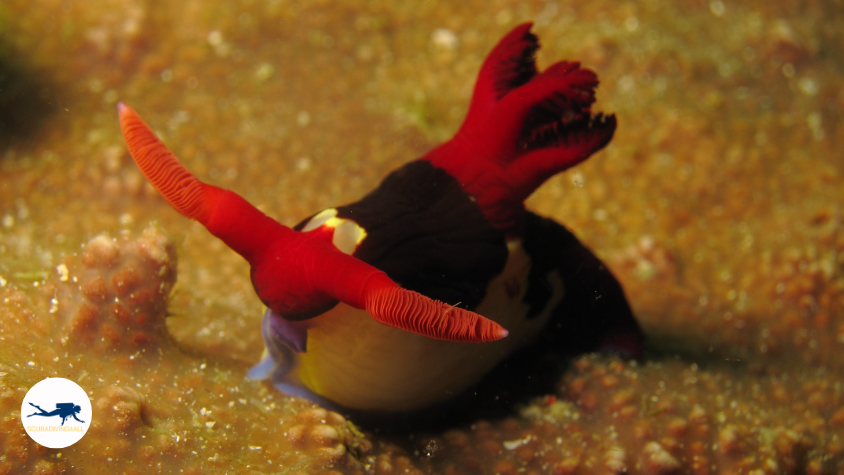
Dive into the vibrant marine life of Anilao, where you’ll encounter fascinating creatures such as:
- Nudibranchs
- Frogfish
- Seahorses
- Cuttlefish
among many others. The diverse marine environments found in Anilao provide an unforgettable experience for both novice and experienced divers alike.
A mere 2-3 hour ride away from Manila airport situates Anilao conveniently for those in pursuit of an unparalleled diving experience. Once in Anilao, divers can explore a wide range of dive sites, each offering a unique underwater adventure and an abundance of marine life.
Whether you’re an experienced macro photographer or a diving enthusiast eager to explore new underwater environments, Anilao’s Muck Diving Haven is an absolute must-visit. With its diverse marine life and unique diving opportunities, Anilao promises an unforgettable underwater adventure you won’t want to miss.
Puerto Galera’s Diverse Dive Sites
Immerse yourself in the underwater world of Puerto Galera, a diving paradise located in the heart of the Coral Triangle. Offering a variety of diving environments, including reef, drift, and muck dives, Puerto Galera is an ideal destination for beginner to intermediate divers seeking a unique and exhilarating underwater experience.
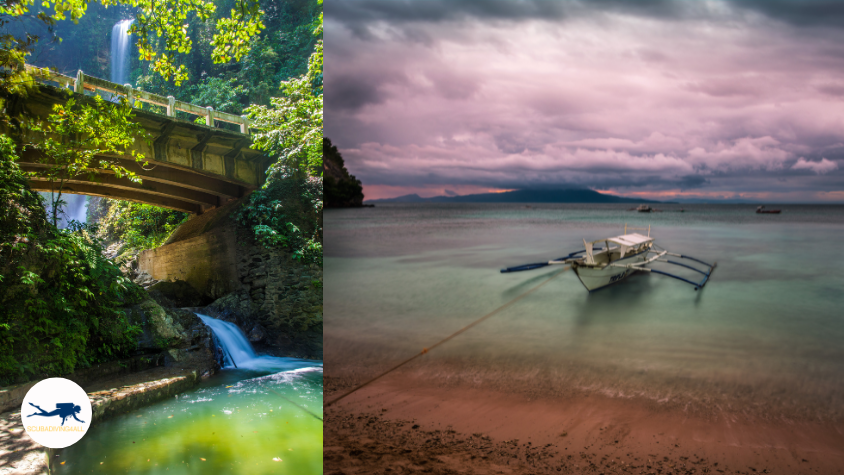
Puerto Galera boasts an abundance of marine life, including nudibranchs, reef octopuses, frogfish, seahorses, and stunning soft and hard corals. The area is also home to schools of jackfish, pelagic fish, reef fish, barracuda, turtles, Spanish mackerel, parrotfish, triggerfish, sweet lips, and bigeye trevallies, providing a truly diverse diving experience.
The Coral Triangle, where Puerto Galera is located, is known for its remarkable biodiversity and is considered the global center of marine life. With its diverse diving environments and rich marine life, Puerto Galera is a must-visit destination for scuba diving enthusiasts.
So, why not dive into the extraordinary world of Puerto Galera and discover its diverse dive sites and abundant marine life? With its breathtaking underwater landscapes and unforgettable diving experiences, Puerto Galera is a destination that should be on every diver’s bucket list.
Apo Reef Adventures
Challenge yourself at Apo Reef, a dive site known for its strong currents and big marine animals. Best visited from November to May, Apo Reef offers unforgettable underwater experiences for those seeking a thrilling diving adventure.
Apo Reef Natural Park is home to:
- Vibrant walls
- Sharks
- Turtles
- Bumphead parrotfish
- Massive schools of snappers and tuna
- Pelagic species such as manta and eagle rays
With its diverse marine life and exhilarating diving conditions, Apo Reef is an ideal destination for experienced divers looking for a unique challenge.
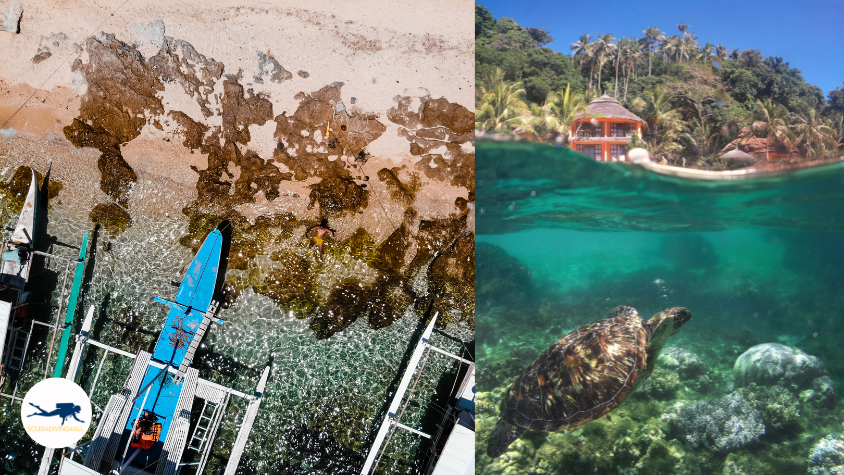
A liveaboard diving trip is suggested to fully absorb the beauty of Apo Reef. The Atlantis Azores and Infiniti liveaboards offer the Coron Wrecks/Apo Reef combo itinerary, giving you the ultimate diving experience in the Philippines. Divers should have an Advanced Open Water (or level 2) certification and a wreck specialty to dive in this thrilling underwater environment.
So, are you ready to take on the challenge of diving at Apo Reef? With its strong currents, abundant marine life, and unforgettable underwater experiences, Apo Reef is a must-visit destination for adrenaline-seeking divers.
Discover more about Apo island diving on our dedicated Blog Post
Dauin’s Underwater Treasures
Discover a world of underwater treasures in Dauin, where world-class muck diving sites and the annual frogfish invasion in April await your exploration. Drift dive at nearby Apo Island’s Washing Machine and experience a unique underwater adventure like no other.
Dauin is home to a wide range of dive sites, including San Miguel North, Coconut Point in Apo Island, and Hole in the Wall. Each site offers a unique diving experience, with diverse marine life such as frogfish, nudibranchs, dragonets, pipefish, and blue-ring octopuses waiting to be discovered.
Dauin’s comfortable accommodations and dive centers make it the perfect destination for both experienced and novice divers alike. With its world-class muck diving sites and proximity to Apo Island, Dauin is an ideal destination for those seeking a unique and unforgettable diving experience.
A 45-minute flight from Manila to Dumaguete, followed by a half-hour transfer, will bring you to the charming coastal town of Dauin. Once in Dauin, prepare to explore its underwater treasures and experience the thrill of diving in the Philippines, specifically in one of its most captivating destinations.
Whale Shark Encounters in Donsol
Imagine drifting alongside majestic whale sharks and manta rays in the crystal-clear waters of Donsol, a popular migratory route for these gentle giants. Perfect for intermediate divers, Donsol offers an unforgettable underwater experience that is not to be missed.
Whale shark encounters are most common between December and May, when these mesmerizing creatures migrate through the waters of Donsol. As you dive alongside these gentle giants, you’ll be amazed by their size, grace, and beauty.

Besides whale sharks, Donsol also hosts manta rays, allowing divers an exclusive opportunity to observe these magnificent creatures closely. The thrill of diving with these gentle giants is an experience that you’ll never forget.
So, why not dive into the unforgettable world of whale shark encounters in Donsol? With its crystal-clear waters, gentle giants, and incredible underwater experiences, Donsol is a must-visit destination for diving enthusiasts and nature lovers alike.
Dimakya Island’s Marine Sanctuary
Dive into the unique marine environment of Dimakya Island’s seagrass banks, home to green turtles and dugongs. Perfect for beginner divers, Dimakya Island offers a one-of-a-kind diving experience in a truly special underwater sanctuary.
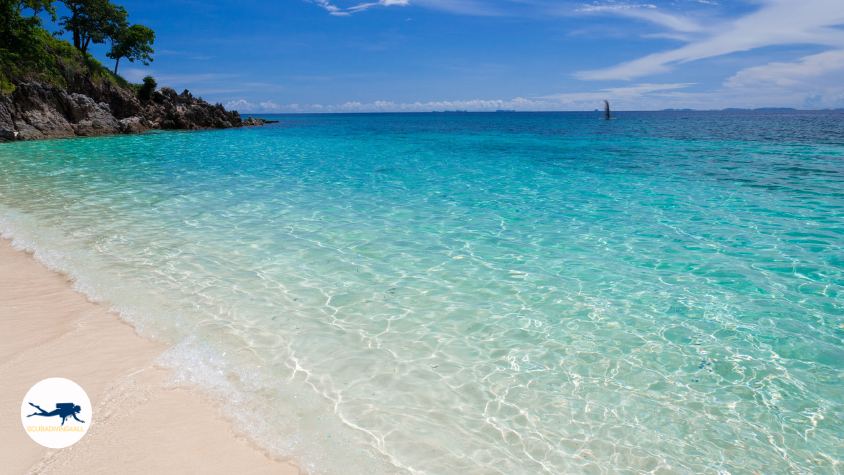
Dimakya Island’s Marine Sanctuary is teeming with diverse marine life, including:
jackfish
reef fish
barracuda
turtles
sharks
eels
parrot fish
puffer fish
blue spotted stingrays
frogfish
sergeant majors
soldiers
cardinalfish
lionfish
scorpionfish
surgeonfish
turtles
With its unique seagrass banks and abundant marine life, Dimakya Island is a must-visit destination for divers seeking a new underwater adventure.
Beyond its marine sanctuary, Dimakya Island also features a variety of exciting dive sites, such as:
Diver’s Heaven
Small Lagoon to Big Lagoon dive site
Manta Bowl
Pescador Island
Dolphin House
Panagsama Beach
Each site offers a unique diving experience, ensuring that there’s something for every diver to explore and enjoy.
So, why not dive into the enchanting world of Dimakya Island’s Marine Sanctuary and discover its unique seagrass banks, home to green sea turtles and dugongs? With its diverse marine life and one-of-a-kind underwater environment, Dimakya Island is a destination that should not be missed.
Summary
From the vibrant marine life of Tubbataha Reefs Natural Park to the historic Coron Bay Wrecks, drift diving alongside whale sharks in Donsol, and exploring the unique seagrass banks of Dimakya Island’s Marine Sanctuary, the Philippines offers a diverse and unforgettable underwater adventure for every scuba diver.
Each of these incredible diving spots showcases the breathtaking beauty and diversity of the Philippines’ underwater world. As you embark on your diving journey through these captivating destinations, you’ll uncover a world of unforgettable experiences, mesmerizing marine life, and awe-inspiring underwater landscapes.
So, are you ready to dive into the best diving spots in the Philippines in 2023? Prepare to be amazed, inspired, and forever changed by the unparalleled beauty and adventure that awaits you beneath the surface of these extraordinary diving destinations.
Frequently Asked Questions
What is the best dive liveaboard in Thailand?
Discovering the Philippines’ clear waters and vibrant marine life is an unforgettable experience. From spectacular reefs, whale sharks, mantas to underwater UNESCO World Heritage sites, it’s no wonder why scuba diving in the Philippines is a must-do! The Philippines is home to some of the most beautiful and diverse marine life in the world. With over 7,000 islands, the country offers a wide range of dive
What month is best to dive in the Philippines?
For an incredible underwater experience, plan your trip to the Philippines between December and April – the dry season – for the best dive conditions.
Is diving in the Philippines expensive?
Diving in the Philippines is relatively affordable, with prices ranging from 2000-4000 PHP per dive and PADI Open Water courses costing 18,000-20,000 PHP. For equipment rental and a full PADI certification course, you can expect to pay around 50 USD per dive and 400 USD respectively.
Is diving popular in the Philippines?
Diving in the Philippines is an incredible experience! With amazing reefs, whale sharks, mantas, and underwater UNESCO World Heritage sites, the country is one of the world’s best diving destinations. The country’s warm waters, diverse marine life, and stunning coral gardens make it a must-visit for any diver. The Philippines is
What is the best time to visit Tubbataha Reefs Natural Park?
Visit Tubbataha Reefs Natural Park between March and June for the ultimate marine life experience!
Marcel Heiniger stands out as a distinguished expert in scuba diving, with a formidable background that includes roles such as PADI Instructor, SSI Instructor, and Dive Center Manager. His deep-seated passion for the underwater world has driven him to dedicate numerous years to the education and guidance of divers across a spectrum of skill levels, ensuring that their encounters with the marine environment are conducted safely and are thoroughly enchanting. His expertise extends beyond mere certifications; he possesses an intricate understanding of diving operations, ensuring the efficient management of dive centers under his leadership and the delivery of exceptional experiences for all divers. Furthermore, Marcel’s proficiency is not limited to diving alone. His extensive travel experience and exploration of diverse diving locales worldwide have equipped him with a sharp ability to identify the unique characteristics and potential of tourist destinations. This expertise positions him as a reliable authority for recommending and evaluating diving spots, ensuring that his audience has access to only the most exemplary selections. Away from exploring underwater paradises, Marcel takes immense satisfaction in sharing his diving experiences and imparting valuable knowledge. His narratives seamlessly blend the technical aspects of scuba diving with the enchanting allure of marine life, captivating both novice and experienced divers, and leaving a lasting impression on their minds.

